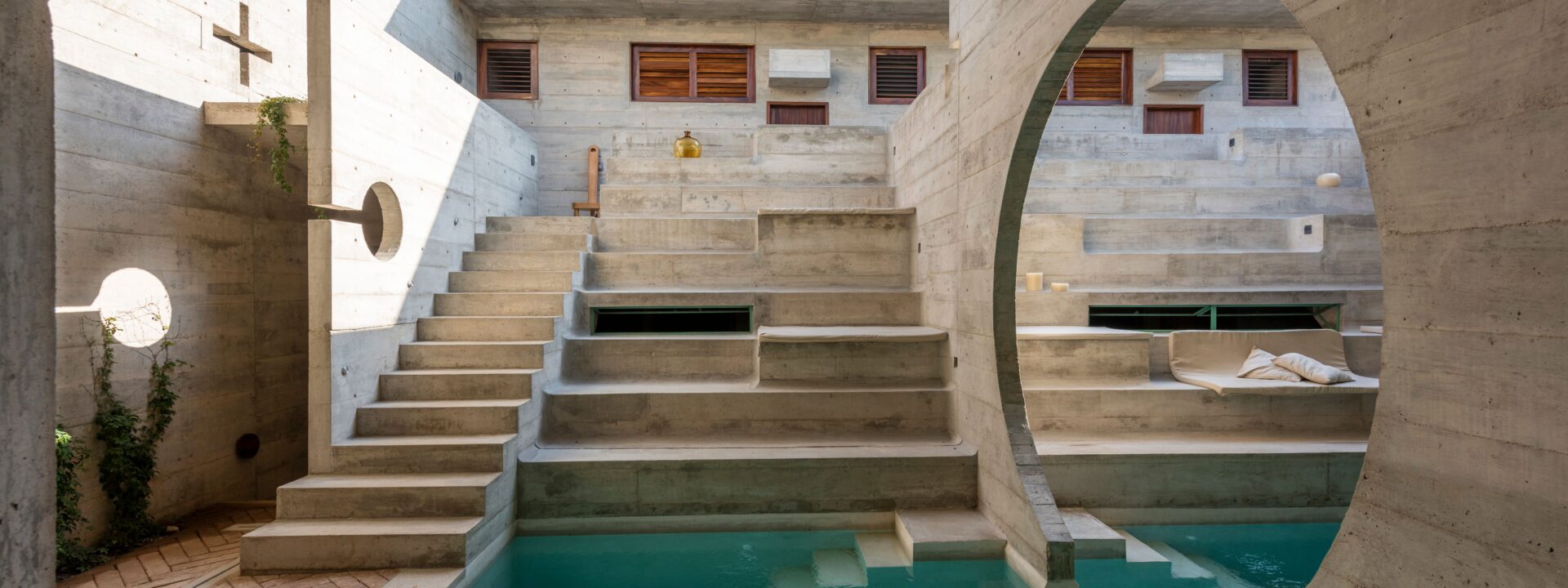The sun has just risen over the Pacific in Oaxaca as I slip into my robe and sandals, stepping out onto the balcony of my suite at La Valise Mazunte. Before other guests wake, I head to my favorite spot—the cliffside infinity pool that seems to pour into the ocean below, though it actually sits high above the waves.
I sink into a lounge chair and start my morning routine. Normally, I’d play music that matches this view, but today I skip the headphones and focus on my breathing, letting the sound of the ocean fill the air. It’s easy to feel connected to nature here, where architect Alberto Kalach carved six suites and a villa into the mountainside. The design is raw yet harmonious—local stone, wood, and clay blend seamlessly with the landscape.
This is the newest addition to a growing collection of Brutalist-inspired retreats north of Puerto Escondido, a once-quiet fishing village famous for its surf. While the town has always drawn adventure seekers, it’s now becoming a hub for design.
The shift began in the mid-2000s near Punta Pajaros, where artist Bosco Sodi opened Casa Wabi, an artist residency designed by Tadao Ando. Soon after, Grupo Habita’s Hotel Escondido set a new standard for stylish stays. Today, this stretch of coast features work by Pritzker Prize winners and emerging Mexican talent, including homes by Tatiana Bilbao and a temazcal by Tezontle.
What started as a secluded escape in Punta Pajaros has now spread south into Puerto Escondido’s busier areas. Grupo Habita’s latest, Hotel Humano, offers 39 rooms built from clay, concrete, and tropical wood. Nearby, Casa To reimagines an Oaxacan temple with a circular concrete pool that blends into the jungle.
At the end of 2024, Alberto Kalach unveiled Castillo de Arena—three Brutalist towers resembling a sandcastle rising from the forest, with a courtyard shaded by ancient ceiba trees. Just steps away is Xique, an eight-bedroom retreat by Estudio Carroll.
Then there’s Casa Yuma, a 25-room property designed to disappear into its surroundings. Walls finished with chukum (a mix of limestone and resin) pair with wood and cement, creating a minimalist escape right on the beach.
With new flights connecting Puerto Escondido to Houston—and soon, New York and Los Angeles—this stretch of coast is quickly becoming a design destination.The architectural boom along Oaxaca’s coast shows no signs of slowing down, especially with the recent opening of Kymaia—where I spend the last days of my trip between Mazunte and Puerto Escondido. This 22-room boutique hotel, designed by architect Ezequiel Ayarza Sforza, blends effortlessly into the Oaxacan landscape. Though the two-story suites are scattered across the property and inspired by Japanese design, their stepped silhouettes remind me of ancient Mexica temples.
The aesthetic—raw concrete, exposed wood, and unglazed clay—feels like a natural extension of Oaxaca’s centuries-old craftsmanship. The same artisans who create the region’s famous barro negro pottery and cochineal-dyed textiles now collaborate with architects to shape these modern spaces. While the materials take contemporary forms, the philosophy stays true: work with what the land offers, let nature guide the design, and honor the art of transformation. Even as the Oaxacan coast rapidly evolves, this kind of development feels like it was always meant to be here.
